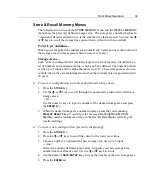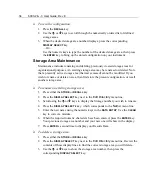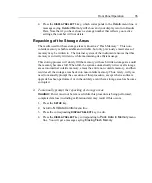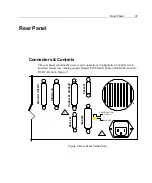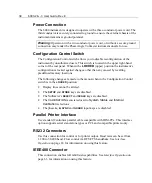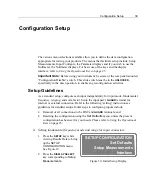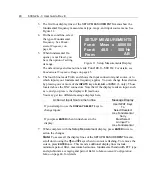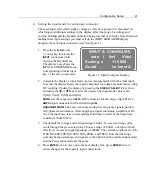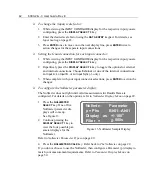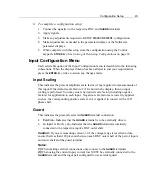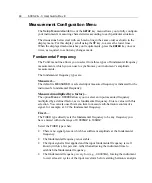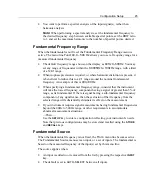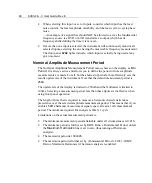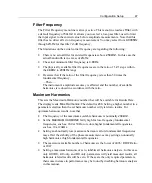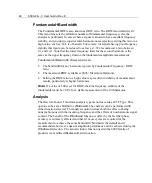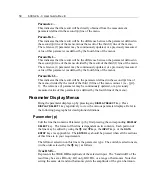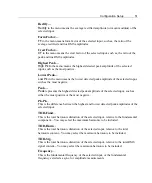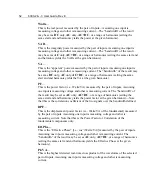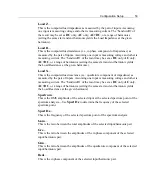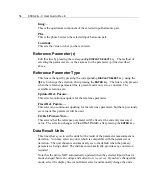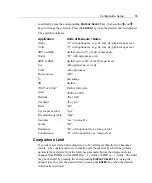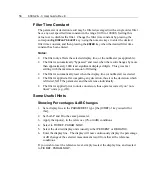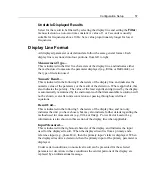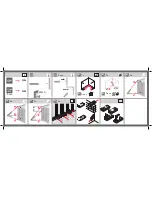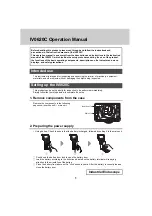
46
6000-2 & -3 User Guide, Rev E
•
When selecting this input, or set of inputs, consider which input has the least
noise content, the least amplitude variability, and the least cycle-to-cycle phase
noise.
—An example of a signal that should NOT be allowed to act as the fundamental
frequency source is a RVD or LVD transformer’s output, which has its
frequency shifted during the time it is moved—
•
If more than one input is selected, the instrument will continuously monitor all
selected inputs, selecting the one having the most stable frequency measurement.
The front panel
SYNC
lights indicate, which input is actually being used at any
given moment.
Nominal Amplitude Measurement Period
The
Nominal
Amplitude Measurement Period
menu, shows on the display as
Min
Period:
It is always active and allows you to define the period of time amplitude
measurements are made. For all, but the shortest of periods, this effectively sets the
results update rate of the instrument. Note that the default measurement period is
250S
.
The update rate of the display is limited to 250mS and the Nullmeter is limited to
100ms. Selecting a measurement period, less than these figures is ineffective when
using front panel operation.
The length of time that is required to measure a harmonic characteristic takes
precedence over the selected amplitude measurement period. This means that if you
enable a
50Hz
harmonic measurement signal expect at least a 1mS measurement
period. The minimum required for analysis is 20mS, 1 cycle.
Limitations on the actual measurement period are:
•
The minimum measurement period attainable under all circumstances is 0.01S.
•
The minimum period is further set by RBW Ratio x Fundamental Period, unless
the
Maximum Harmonics
line is set to zero (thus turning off harmonic
analysis).
•
The maximum period is 100000S.
•
The maximum period is further set by (Fundamental Period x 8192) / (RBW
Ratio x Maximum Harmonics) if harmonic analysis is enabled.
Summary of Contents for Xitron 6000-2
Page 1: ...USER S GUIDE 6000 2 6000 3 Phase Angle Voltmeters...
Page 2: ......
Page 36: ...36 6000 2 3 User Guide Rev E...
Page 86: ...86 6000 2 3 User Guide Rev E...
Page 94: ...94 6000 2 3 User Guide Rev E...
Page 101: ...Appendix B 101...


